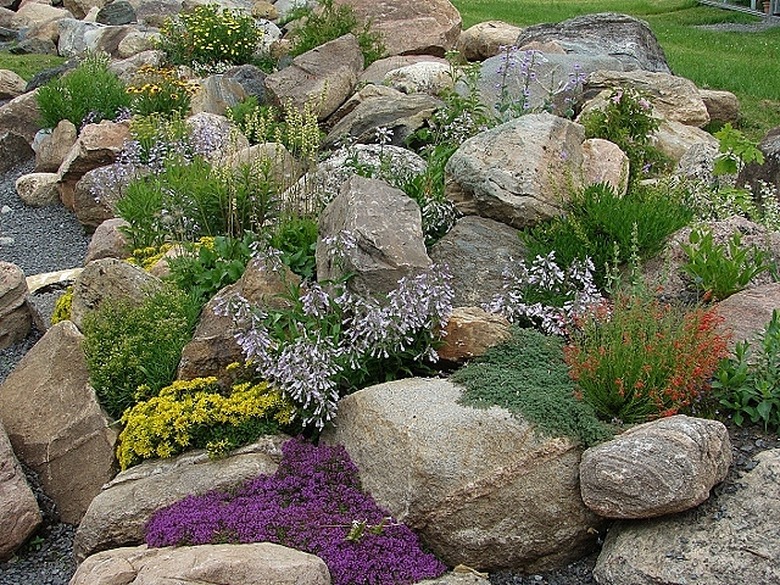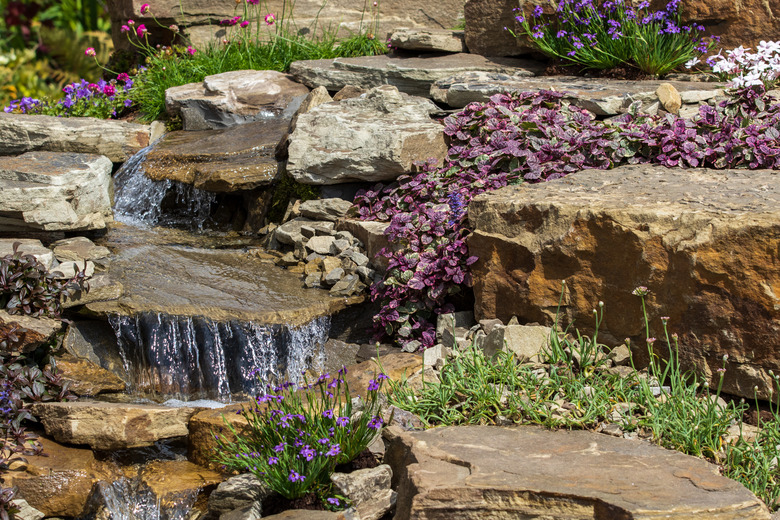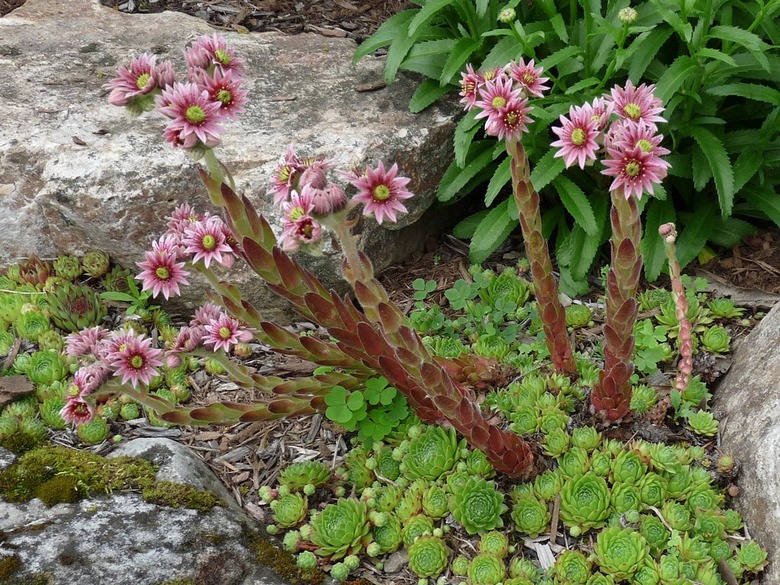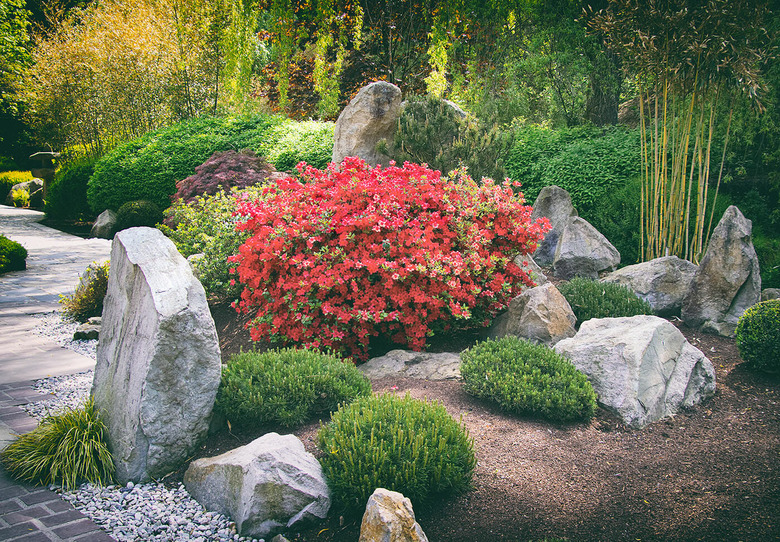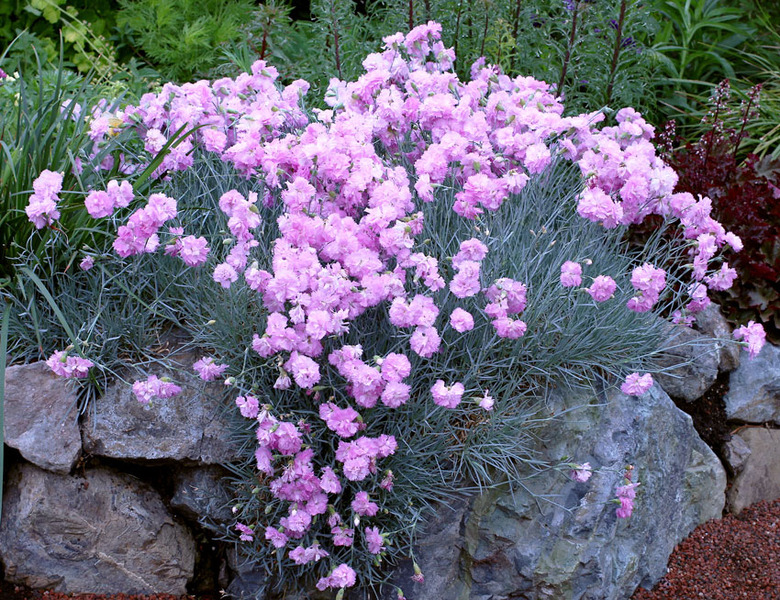Tips For Designing A Rock Garden
In simple terms, a rock garden—sometimes called a _rockery_—is an intentional landscape feature where rocks and their arrangement are the center of interest and plants play a supporting role. A rock garden can provide contrast to a vista that is predominantly vegetative, and it can reconcile an otherwise problematic spot on your property. The regional character of your land, the specific topography of your garden site and, of course, your vision for the garden itself will influence the kind of rock garden you build.
Why Build a Rock Garden?
Why Build a Rock Garden?
A main appeal of a rock garden is that it offers visual contrast. Contrast is key to successful and pleasing design aesthetics. Amidst a sea of greenery, an adeptly configured rock garden breaks the sameness by providing contrasts of color, shape, and rhythm. It gives the eye a place to linger and rest.
- If you live in a northern climate where your other gardens are buried in snow during winter, a rock garden furnishes interest to the blanketed landscape.
- In an area of your yard where erosion is a problem, a rock garden can stabilize the soil.
- If your property includes a rocky outcropping or a rock too large to move without special equipment, a rock garden can be an artful way to make the most of a landscaping challenge.
Choosing a Site for Your Rock Garden
Choosing a Site for Your Rock Garden
If you are building your rock garden around that rocky ledge or giant rock that happens to be in your yard, the site has already been chosen for you. Otherwise, it's worthwhile to consider the location carefully. You don't want to have to move a rock garden after it is established. Think carefully about the features you want to include in your rock garden. A water feature that includes a circulating pump will require a source of electricity. If you are going to bring in large rocks, think about access to the site. And pay attention to the amount of sun and shade your chosen site gets, as that will determine what plants will do best there.
Sourcing the Rocks for Your Rock Garden
Sourcing the Rocks for Your Rock Garden
Unless you have an abundance of rocks on your property—and even then you may want to bring in a special "anchor" rock or two—you'll have to locate a nearby quarry or other source of large landscape boulders. Ideally, you'll be able to specify the exact rocks you want and arrange to have them delivered when your rock garden site is ready. When you choose specific rocks, it's helpful to make a quick sketch of their shape and relative size. This will help you work out the arrangement you want for them so that when they are delivered they can be placed as closely as possible to their final positions.
Since no two rocks are alike, planning a rock garden before you've chosen your rocks is something of a chicken-or-egg proposition. You may have a preconception of the type of rock garden that will be incompatible with the rocks available to you. Unless you wish to go to extraordinary lengths to import specialial rock that matches your vision, it's best to ascertain beforehand what sort of rock you'll have to work with. Different kinds of rock are best suited to different rock garden designs. Rough-hewn solid boulders have a reassuring presence all by themselves, whereas a craggy, fissured rock may imitate a mountain landscape in miniature. Elongated, flat rocks can be arranged in horizontal ledges or they can be grouped vertically as enigmatic standing stones. Smooth rounded stones set in a bed of contoured sand can suggest a seascape.
Building Your Rock Garden
Building Your Rock Garden
Before you place the first rock, thoroughly clear the area of weeds and debris. The effort you make now will pay off later in less maintenance. In the spot where you will arrange your biggest rocks, dig a depression. Most sources recommend burying as much as one third of your rocks for a natural effect and for stability. Start by positioning those largest rocks, then fill in the soil around them. Finish up by placing the smaller rocks. Prepare the soil for any plantings that are planned, adding amendments as necessary. Pack crevices and interstices between rocks with soil to more completely integrate plantings into the design.
Tip
Any time you have a grouping of two or more objects, those objects have a relationship. That relationship can be stable or dynamic. Your challenge is to intuit what arrangement will give your rock garden the atmosphere you want. Both relationships have attractive qualities—stable relationships are calmer and more contemplative, and dynamic ones are more intriguing and arresting. The largest rocks set the tone for the relationship in your rock garden.
Accessorizing Your Rock Garden
Accessorizing Your Rock Garden
Most rock gardens are sufficient in themselves, but that doesn't mean that carefully chosen accessories can't be used to good effect. A Japanese stone lantern or a stone vessel or sculpture integrate well and add another layer of context. Lighting can be incorporated into your rock garden to add nighttime interest. There are few things more charming than the gentle splashing of water over rock. If your rock garden is on a slope, adding a water element is a natural. You'll need a catch basin at the bottom to contain the recirculating pump and to act as a reservoir, plus concealed piping to return the water to the top of the waterfall. While constructing a water feature of this sort is fairly straightforward, it does involve electrical wiring and some other skills as well, so be realistic about your abilities and comfort level, and get help from a professional if you need it.
Plants for Your Rock garden
Plants for Your Rock garden
The plants you select for your rock garden will depend in part on which U.S. Plant Hardiness Zone you occupy and also on the light conditions your rock garden offers. In general, the plants that work best are compact and hardy perennials, although a few well-placed taller plants can provide admirable contrast and balance. Dwarf shrubs or evergreens can be used to good effect.
The soil in your rock garden should be amended as necessary with composted manure, peat, sand and topsoil to yield a well-drained and fertile medium. Take your cues about the soil's ideal composition from the plants you choose—the ideal soil for hostas is not going to be the same as for cactus.
Your local garden center can recommend suitable rock garden plants for your area, but here are a few to consider if your climate is suitable:
- Rock cress
- Basket of gold alyssum
- Blue star creeper
- Dwarf coreopsis
- Hens-and-chicks
- Sedum
- Dianthus
- Cranesbill
- Snow-in-summer
- Soapwort
- Ice plant
- Bluebell
- Lamium
- Lesser periwinkle
- Creeping phlox
- Hosta
- Bleeding hearts
- Pachysandra
- Euphorbia
- Prickly pear cactus
